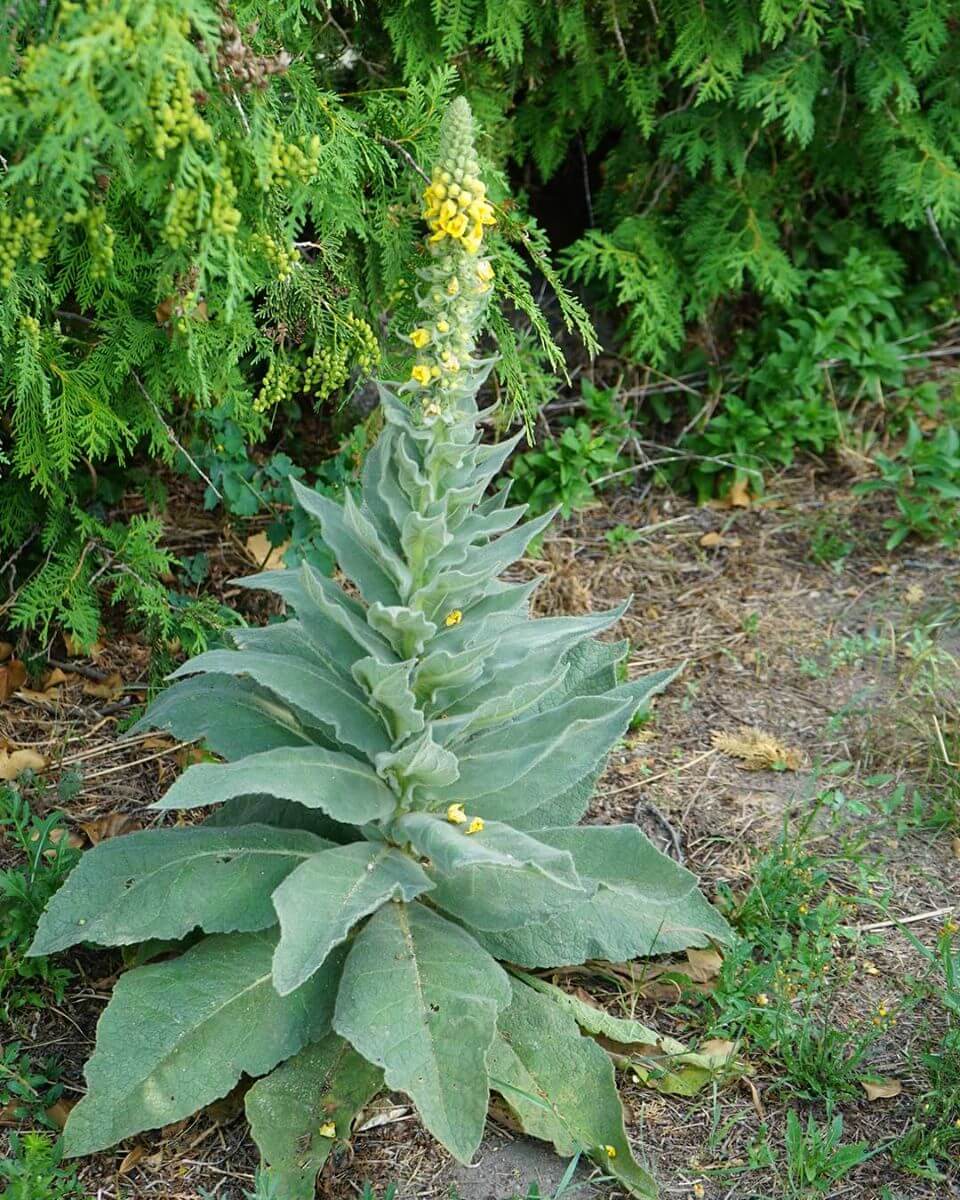Often overlooked in the wild, the mullein plant is an underrated botanical wonder packed with healing properties. Known in the scientific world as Verbascum thapsus, this tall plant with fuzzy leaves grows along roadsides and in open spaces. Though many pass by without giving it a second glance, mullein has been a staple in herbal medicine for generations. With its impressive height and bright yellow blooms, it’s more than just a weed—it’s a powerful natural remedy waiting to be recognized.
A Glimpse Into Mullein’s Rich History
Mullein carries a long and fascinating history filled with folklore and practical uses. In ancient times, it was thought to protect against evil spirits and was frequently used in spiritual ceremonies. Both the Greeks and Romans turned to mullein for its medicinal value, especially in treating respiratory issues. During the Middle Ages, it earned the name “Hag’s Taper” for its use as candle wicks. Indigenous peoples of North America also tapped into its healing powers, applying it for coughs, colds, and skin problems. This legacy highlights mullein’s lasting significance in the world of natural health.
How to Recognize Mullein in the Wild
Spotting mullein is relatively easy once you’re familiar with its distinct look. It usually reaches between 2 and 6 feet tall, featuring a single upright stalk. At the base, it forms a rosette of large, soft, velvety leaves, while the top sports a dense cluster of small yellow flowers. The plant’s fuzzy texture helps it retain moisture, and its unmistakable form makes identification simple.
Where Mullein Grows Best
This resilient plant adapts to a range of conditions. Mullein thrives in sandy, well-drained soils and is commonly found in places like fields, meadows, and along roadsides. As a biennial, it grows leafy rosettes in its first year and sends up a flowering stalk in its second. Thanks to its drought tolerance, mullein often flourishes where other plants struggle.
Top 10 Health Benefits of Mullein
Mullein’s diverse healing qualities make it an excellent addition to any natural remedy collection. Here are its ten most notable benefits:
- Supports Lung Health
Mullein acts as an expectorant, helping to expel mucus and clear the respiratory system. It’s especially helpful for colds, bronchitis, and other breathing issues. Drinking mullein tea can ease irritation and promote clearer airways. - Reduces Inflammation
Its anti-inflammatory compounds make mullein a natural remedy for conditions like arthritis or joint pain. It works by lowering inflammatory markers in the body, easing discomfort. - Fights Infections
With proven antimicrobial effects, mullein helps combat bacteria and viruses. It’s especially useful during cold and flu season, supporting your immune system naturally. - Mild Pain Relief
Mullein offers gentle pain-relieving properties. Whether used topically or consumed, it can help reduce headaches, sore muscles, and minor aches. - Soothes the Skin
The plant promotes skin repair and calms irritation. It’s beneficial for treating minor wounds, burns, or rashes, thanks to its antibacterial and anti-inflammatory effects. - Aids Digestion
Drinking mullein tea can soothe the digestive tract and help with issues like bloating, indigestion, or stomach cramps. - Boosts the Immune System
Its immune-supporting effects help the body fight off illness and maintain overall well-being. Mullein is a smart addition to any wellness routine. - Packed with Antioxidants
Rich in antioxidants, mullein protects cells from oxidative damage and may reduce the risk of chronic diseases. - Relieves Stress and Anxiety
Known for its calming effect, mullein can help ease tension and promote a sense of relaxation. It’s commonly used in teas or aromatherapy for stress relief. - Eases Earaches
Mullein oil is a traditional treatment for ear pain and infections. When gently warmed and applied, it soothes inflammation and fights infection.
Harvesting and Using Mullein Safely
Collecting mullein is straightforward. The leaves are typically harvested in the first year, while the flowers are picked during the second year when in bloom. Both can be dried and used in herbal teas, tinctures, or infused oils. Make sure the plants are gathered from clean, pesticide-free areas before using them.
Safety Tips and Considerations
While generally safe, some individuals may experience allergic reactions or skin sensitivity. Test a small patch before applying it topically. Pregnant or breastfeeding individuals should check with a healthcare provider before using mullein. Always use in moderation and consult a medical professional if you have underlying health issues.
Final Thoughts: Nature’s Overlooked Healer
Mullein is a hidden gem with an impressive array of health benefits. Its history, healing uses, and easy identification make it an ideal herb for those interested in natural remedies. Whether you’re treating a cough, improving your immune health, or seeking calm, this plant has plenty to offer. Take a closer look next time you’re out in nature—you might just find a powerful ally growing right at your feet.
